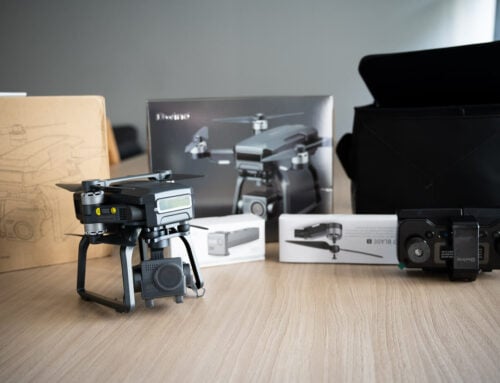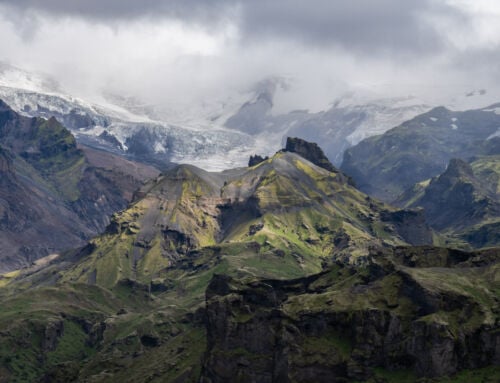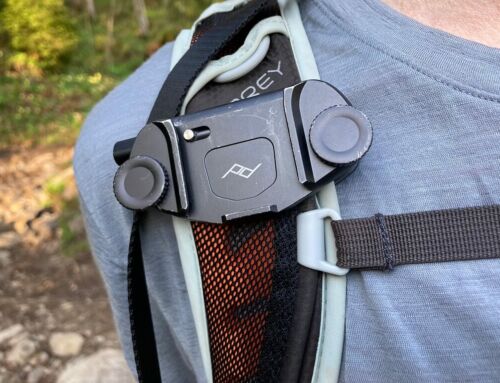What’s in my Bag? Camera Gear I use and Why
In this post, we’ll take a look at what’s in my bag, the camera gear I use and why. It can take time to choose the right gear, especially if you also have to keep hiking in mind. One recommendation I can give you is to not just buy random gear. Rather, sit down, shortlist some, compare all the gear in your list and think about how much you will use it and why.
With that in mind, hopefully, this post can help you set up or choose your own gear as well.
As a hiking photographer, this gear has been purchased with hiking and image quality in mind. This means two things:
- Firstly, paying attention to the size, weight and cost of an item: when hiking several hundred KM/Miles each year, weight is an important factor. But so is the cost.
- Secondly, image quality: this is not something I am willing to compromise on much, especially in terms of dynamic range, to try and produce the best possible output.
The weight is important not only in terms of physical effort but also in terms of what I can bring on a hike. For example, I preferred to purchase the Nikkor Z 24-70 f4 instead of the f2.8 version because it is 300 grams lighter and considerably cheaper. While 300 grams may not seem much per se, the weight will quickly add up, considering all the gear you can bring on a hike.
Image quality is critical for me. While I do enjoy the post-processing part of photography, I always try to keep it to a minimum. I’d rather spend more time on the trail rather than processing photos. Having a good sensor and filters will help with that in most cases.
So, without further ado, let’s take a peek at what camera gear is in my bag when I’m up in the mountains.

Please note that as an Amazon Associate, I earn from qualifying purchases. If you find any of these recommendations helpful and decide to purchase a product I recommend, I will receive a small commission. This commission will help me keep the site running, and it will not cost you anything extra. This also means you will effectively support this site for free if you purchase one of these guides through my site.
Camera, Lenses and Accessories for Hiking
As you will see, I am a Nikon guy. To be honest, however, image quality nowadays is excellent regardless of the brand you choose. Camera choice ultimately comes down to personal preferences, ergonomics and lenses available for a specific system.
So here’s the list of my gear camera gear and accessories:
- Nikon Z7 II: I switched to the Z7 II from a Nikon D800, and the difference in weight and image quality was rather massive. Weighting only 615 g / 1.4 lb, this camera is always with me on my hikes. The 14.7 EV dynamic range and 45 megapixels sensor also ensure a great processing latitude. Although it does not have Pro-Res or BRAW for video natively, it can record video up to 4k and 60FPS. Still, a firmware upgrade is available from Nikon at about 200$ to add Pro-Res.
- Nikkor 14-24 f2.8: this is my wide-angle choice. Good for landscape and astrophotography, this lens is with me most of the time. Incredibly light for this lens type too, at only 650 g/1 lb 7 oz. Apart from the weight and image quality, which is stellar, the next best thing is the filters. It can take a 100mm system via a dedicated adapter. This means more weight savings compared to lugging around a 150mm system.
- Nikkor 24-70 f4: this is the lens that sits on the camera by default. Extremely light at only 300 grams, the 24-70 range is good on most occasions. I actually bring only this if I know I will not need ultra-wise or tell. Also, this is the one I use for filming, and this lens does a great job at that. This lens is one of those with a retractable element, which I do not particularly like, but it does a good job of keeping it compact.
- Nikkor 70-200 f2.8: Although I love shooting with the 70-200, this lens is now always in my bag. I actually carry it only when I know I will use it. I always study the terrain and plan the shooting in advance for this purpose. Yes, I may miss the occasional shot, but at 1,440 g/3 lb 2.8 oz weight, it is a lot to bring around. However, a drone is a good alternative to have, and I almost always have it with me. On those occasions that I have it with me, I know I am going to have fun. Abstracts, Objects isolation and compressions are creative opportunities that this lens opens up. The main problems with this lens are price and weight.
- Manfrotto Befree carbon fiber tripod: in terms of weight/price ratio, this is one of the best tripods you can find on the market. At 1.5 kg / 3.5 Lb, it is also very packable and portable. Not as stable as pricier tripods, but that is not a problem unless you are shooting in very strong winds.
Other Camera Equipment I use includes:
- Go Pro Hero 10: I purchased this when I first started to film my hikes. Extremely light, has great stabilization, and has decent 4k image quality. I can use it on the run. I always have it with me.
- Syrp Genie Timelaps System: I love time lapses! So much so that I have set up a 3-axis rig using the Syrp (now Manfrotto) Genie devices. I have two Genie Mini, a Genie one and two sliders (60cm and 100cm). The sliders and Genie one aren’t really portable, but the two genie minis and the brackets are. This allows me to go on hikes with a 2-axis setup, which is great. There isn’t really a much lighter combination if you want to have some motion time-lapse equipment with you on hikes.

Drone and Drone accessories for Hiking
The drone I use is almost always with me when I go hiking. The only exception is when I go hiking in areas where flying is prohibited. Otherwise, it is always in my bag.
- Mavic Air 3: apart from my Nikon, this is my favorite bit of equipment. Flying drones is fun and really opens up creative opportunities that won’t be otherwise possible. The image quality of the Mavic 3 is really great for a drone and allows for a good processing latitude.
- DJI RC: I never liked using my mobile much to pilot a drone. I never liked the cost of the DJI Pro RC either, though. So when the new DJI RC was released, I essentially jumped on it. The screen is larger, with great brightness. It is also lighter than the standard RC, but the battery will last a little less.
- DJI Mavic 3 Car charger: I pretty much spend most of my time in a tent when on a hiking and photography vacation; a car charger is essential to keep the batteries running.
- Freewell All Day Pack: great quality filters and much cheaper than DJI’s. The all-day pack covers pretty much all the possible use cases, plus filters for long exposure!

Camera Bags and Hiking
I have two Camera bags, which I essentially only use to literally move the gear from one place to another. I don’t use dedicated camera bags when hiking, but Hiking backpacks with camera Inserts. This is so for various reasons, the main one being the comfort that dedicated backpacks offer over camera backpacks on long and demanding hikes. Essentially the main benefits are:
- Better support: Backpacks are designed to carry weights over long distances as comfortably as possible. Camera backpacks are primarily designed to carry gear, but I can use a camera insert into my backpack.
- Comfort: one thing that makes a big difference in comfort is a good ventilation system. I am yet to see a barely decent ventilation system in camera backpacks. As someone who often hikes 18-22 KM a day, this is an essential feature that really makes a big difference in how comfortable you can be on the trail.
- Weight: Hiking backpacks tend to be lighter than camera ones. Camera backpacks do not include all the padding that camera backpacks have. That makes them lighter. Again, with a small camera insert, your pack will still be lighter.
If you want to check that in detail, I have written a post on my hiking backpacks and camera inserts, which you can read here.
And that was the list of my gear. If you are trying to decide on camera gear to buy for your hikes, I hope the information in this post can help you to make a decision.
What’s your favorite gear and why? Feel free to drop a comment below!




Leave A Comment